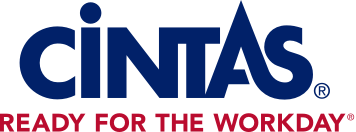How Can I Get First Aid, CPR/AED Certified?
General First Aid, CPR and AED certifications are designed for the average person who wants to learn how to assist someone facing a medical emergency until professional help arrives. Anyone can learn to help with the correct training.
Certification courses are available for individuals and for workplaces. If you are seeking a workplace provider, you can choose among on-site, blended-learning or off-site training options.
Once you find the right certification partner, you can contact them to set up the training delivery options and courses that are right for your workplace.
Choosing the Right Certification Course
Top First Aid, CPR and AED certification providers train you to administer the latest emergency assistance techniques. High-quality certification courses also allow you to practice and demonstrate what you’ve learned in the presence of a certified instructor.
It’s important to evaluate any First Aid, CPR or AED certification provider before choosing one. Among the most respected training courses are those created by the American Heart Association or the American Red Cross.
As one of the American Heart Association’s largest training partners, Cintas trains and certifies more than 300,000 people in First Aid, CPR and AED every year.
Top certification course providers should also staff your class at an adequate level. You should expect a low student to instructor ratio (1:9) and a low student to practice mannequin ratio (1:1 or 1:2). A number of practice AEDs also should be available for students to use.
What’s the difference between First Aid, CPR and AED certification?
First Aid, CPR and AED certification courses all teach you how to respond to medical emergencies, but each emphasize different skills.
First Aid Certification trains you to evaluate and react to a variety of general medical emergencies until first responders arrive. Through first aid certification training, you’ll learn how to recognize and respond to minor medical emergencies such as a small burn or cut, or more serious ones, like a broken bone or seizure.
CPR and AED certification courses train you to help someone suffering from a cardiac event, or to assist a person who has stopped breathing (like in a near drowning). CPR stands for Cardiopulmonary Resuscitation. AED stands for Automated External Defibrillator.
CPR certification training involves teaching you to identify a person suffering from cardiac arrest or who is not breathing. You’ll learn proper chest compression techniques, and how to help the victim to restart breathing.
AED certification training will show you how to use an AED machine. An AED works by delivering an electric shock to the heart. You’ll also learn how to prepare a victim for the shock and how to properly administer and evaluate it.
First Aid and CPR/AED Certification Options
There are several different ways first aid training can be delivered. First Aid, CPR and AED training can be offered online or in-person. Also available are blended learning options, where portions of training and assessment are delivered online and in-person.
Cintas offers all three of these options, and can offer training at your work site, or at one of our local training centers.
It’s important to note, that while training is offered online, an online-only course will not allow you to demonstrate skills in front of a certified instructor. Online-only First Aid and CPR/AED courses do not meet OSHA requirements and may not meet your workplace safety standards. Check your workplace policies, industry guidelines or state mandates to determine what type of training will work best for your workplace. [1]
Certifications Recommended Per Industry
There are several types of First Aid, CPR and AED certifications depending on your needs.
They Include:
- First Aid Certification: trains on the basics of the most common first aid emergencies, including how to recognize them, how to call for help and how to perform lifesaving skills.
- CPR/AED Certification (Cardiopulmonary Resuscitation): trains how to recognize cardiac distress, perform high-quality CPR and to use AED equipment.
- BLS Certification (Basic Life Support): trains medical professionals in more advanced CPR to assist in breathing and cardiac emergencies for adult, child, and infants.
Types of American Heart Association First Aid, CPR and AED training courses include: [2]
- Heartsaver® courses -- Designed for “anyone with little or no medical training who needs a course completion card for job, regulatory (for example, OSHA), or other requirements.” These courses are open to the general public.
- Healthcare Professional courses -- Training reinforces healthcare professionals' “understanding of the importance of early CPR and defibrillation, basic steps of performing CPR, relieving choking, and using an AED.”
- Heartsaver® Pediatric First Aid CPR AED -- Teaches students to respond to and manage illnesses and injuries in a child or infant and is designed for childcare workers.
